Blog Archive: June 2016
Berlin Schönefeld Airport
| Airports | 23 seen

Berlin Schönefeld Airport ( Flughafen Berlin Schönefeld) )was an international airport near the town of Schönefeld at the southern border of Berlin, the capital of Germany, 18 km (11 mi) southeast of its city centre.
On 25 October 2020 the Schönefeld name and IATA code ceased to exist, marking its closure as an independent airport, with large parts of its infrastructure being incorporated into the new Berlin Brandenburg Airport (IATA: BER, ICAO: EDDB) as its Terminal 5 with its sections renamed to K, L, M and Q.
Schönefeld was the major civil airport of East Germany (GDR), and the only airport serving East Berlin. It will be merged into Berlin Brandenburg Airport when it opens in 2019 or later.
Berlin Schonefeld airport
This is already second airport in Germany I have visited (about a year ago I first landed at Frankfurt-Han airport. We get here from Riga using cheap Ryanair flight and used as middle point for further travels to Spain (Malaga).
We had a couple of hours (well more than 12) between our flight to Malaga, so we decided to use this spare time of Berlin sightseeing, and decided to get to the Alexanderplatz, for that we had to get to the nearest train station, which luckily is located nearby.
Construction connecting airport to train terminal
Parking lot near Berlin airport
Berlin Schönefeld Airport has seen a major increase in passenger numbers over recent years, which was caused by the opening of bases for both easyJet and Germanwings. In 2008, the airport served 6.6 million passengers.
Following German reunification in 1990, operating three separate airports became increasingly cost prohibitive, leading the Berlin legislature to pursue plans for a single airport that would be more efficient and would decrease the amount of aircraft noise from airports within the city. Therefore, it was decided to build Berlin Brandenburg Airport at the current site of Schönefeld Airport, originally scheduled to open in late 2012. For various reasons, mainly issues with the fire alarm/safety system, the opening has been postponed to 2016 or later.
My First Star Trail Photography
| | 8 seen

I have wanted to make star trail photography ever since I saw one. It took me some time to actually get out in the dark and capture one, as I knew it wont be so simple as it was with HDR photography.
My equipment for this night's adventure - DSLR camera and a tripod. No remote control (not even a duct tape), I pressed shutter release button, after each 30 second long exposure, by hand this night.
It was fun experience, as I choose to shoot from our rural house nearby meadows - distant dog barks, frog noise from pond and a lot of stars.
My first star trails - didn't had much clue what I'm actually doing here tonight... no remote, no duct tape, manual shutter release after each 30 sec exposure, a little bit light paint
... Adobe Photoshop Stack.... Will do better next time.
First attempt of star trails
It is a combination of 10 30 second long exposures, in one exposure I have used light paint to paint out birch. ISO 200 (I should most probably rise it a bit higher - 800 - 1600, but tonight I was not eager to go with higher ISO numbers)
Second attempt of star trail photography
Again 10 30 second long images combined in one.
Third attempt of star trail photography
Now this is a combination of 60 30 second long exposures.
How To Stitch Panoramic Photos with Adobe Photoshop (Photomerge)
| Digital Photography School | 9 seen
I have wanted to write about panoramic photography technique I have been using for a very long time already, today finally I decided to put my knowledge on paper (blog).
Panoramic photos are cool and easy way to fake a wide angle lens, you don't have to own fancy DSLR camera and super wide angle lens to fit more into frame. For today's tutorial I'm using my Canon Rebel T5 DSLR camera with kit 18mm-55mm lens. I'm always trying to shoot at widest (18mm) to fit more details in frame.
Tools you will need: A camera, Adobe Photoshop
Let's start with basic photography:
Single landscape photo (f11, ISO 100, 18mm)
Yup, that's my backyard. I trim grass here a lot. For shooting this photography I'm using a tripod from low angle (close to ground). Thus, in daylight you don't need to use a tripod mandatory, but it still helps.
Next, I change my camera on tripod head to portrait mode and shoot 6 separate images (manual focus), rotating tripod head for about 10-15 degrees after each shot. then I will use Adobe Photoshop to stick those 6 images together and will make following panoramic image:
Panoramic photo
The same scene, the same shooting angle, the same focal length (18mm) just there are framed more details (boxes and wall of house). The same scene, just wider.
For post-processing images I'm using Adobe Lightroom and Adobe Photoshop. At first I load all portrait images in Lightroom library, then I export them as .PSD files, Open Adobe Photoshop -> File -> Automate ->Photomerge, browse for .psd files you just created. I often use either circular of perspective mode for blending my images. Leave it for Potoshop to handle the task, and once it is ready save as .tiff file. Now open that .tiff file in Ligtroom, crop, apply some basic editing and you are done.
Hope it helps.
Postcards from Riga
| | 6 seen

It was still and tranquil (most probably Friday evening) after visiting my dear grandmother in Riga, I decided to take Riga in night pictures.
Experimented with long exposures and HDR photography tonight.
View towards Old Riga from Radisson SAS hotel
River Daugava
View towards Old Riga
Vansu bridge in Riga
Classical Old Riga photography
River Daugava
Riga: Iron Bridge, TV Tower and National Library
Short Day Trip to Lithuania (Curonian Spit)
| Travel guides | 6 seen
At start of May 2016, we went on a short two day trip to Lithuania, we had no goal or destination planned. Just a spontaneous trip idea. Unfortunetly our car broke somewhere in middle of nowhere (Barta- Rucava road) and we had to stay overnight in Liepaja.
Next morning we booked a rental car and our spontaneous trip started. We visited Palanga, Klaipeda, Juodkrante and Nida on Curonian Spit.
Apple tree blossoms
| | 6 seen

A couple days ago I introduced you with first sprouts in our garden. Today allow me to show first apple tree blossoms from our apple orchard.
Apple orchard in mid-May 2016
Apple tree blossom
Akropolis Shopping Mall in Klaipeda
| Shopping Venues | 81 seen
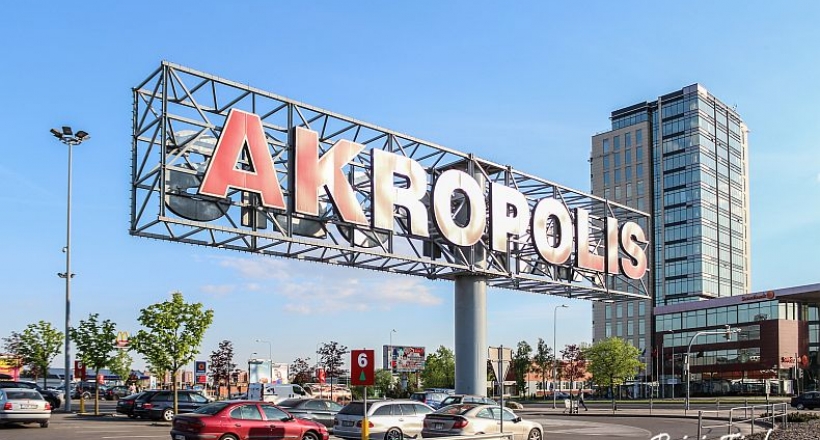
Shopping and entertainment center Akropolis in Klaipeda most probably is the largest shopping venue in the area. Those of you who have traveled to Vilnius most probably will recognize this brand. I first discovered Vilnius Akropolis in 2003 or something.
Now it is time to put Akropolis Klaipeda on map. We were returning from Curonian Spit and decided to make shopping somewhere in Klaipeda, I noticed few Rimi and Maxima stores when we approached Klaipeda from Liepaja, but after we left Smiltyne Ferry Terminal Akropolis crossed our way. It was time to make a stop.
Akropolis shopping mall in Klaipeda
I was tired and I even didn't visit this shopping mall actually, instead I spent few hours in parking lot, well, that's a shopping experience also, right?
Parking lot near Akropolis Klaipeda
HyperMaxima, Drogas, Douglas and many other locally known brands here.
My Summer Office 2016
| Home Remodeling | 6 seen
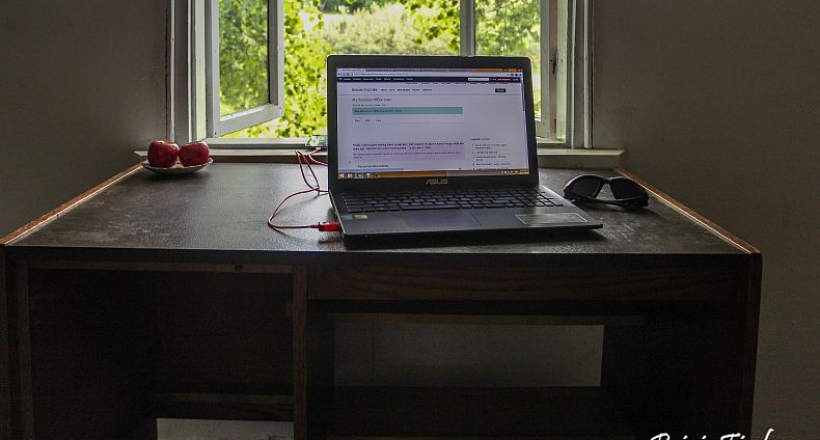
Finally I have a good working place, a year ago I had to spend my days in front of house, while two years ago I reported very scenic working place - Turtle Lake in Tbilisi.
After several days of improve back at our rural house, the room meant to be an office / guest bedroom is finally done, except it asks for some interior decors and other details, which makes overall mood.
Summer office 2016
Well I haven't done much digital work from here yet, but I hope I will spend these Summer nights not only by trimming grass, but hopefully patching some Drupal modules, developing new things, of course blogging, and post processing my photography (Adobe Lightroom, you rock)
As for Digital nomads, the place means nothing until you have good internet connection, well this is a problem a bit, we are using routers built in our phones to connect our laptops to the rest of the world (or in my case with Linode in London data center). The internet is pretty slow or is not available during daytime, thus it is fast as a rocket in night (strange, right).
Ok, enough talking, it's time to trim some more grass!
Taking the Chimney Down
| Home Remodeling | 7 seen
This is a task we had, most probably, to do already a year ago, together with roof replacement, but trust me, last year's summer was one of the hardest, as the new home owners we didn't have much clue how to handle all those many things, the house asked us.
So it took about a year before we actually decided to tear town that huge manfetel chimney. Well. I actually hired two workers to help me with it, meanwhile I was in the other part of loft painting and photographing the small room.
Chimney to be taken down
In past, most probably by time, when this house was built (1890) this chimney was not only just a chimney, but also a bread oven, kitchen and maybe even a bath. Nowadays its leaky, non functional, beneath it a ceilings are made with out any good reason. It asks to be removed, to free up space. A year ago we lost a top of this chimney while doing roof replacement works, see: Replacing Roof - Part 3: Removing the old roofing (Losing Chimney)
For making above and most of the rest pictures bellow I had to use light painting technique while shooting from a tripod (about 10 sec exposure)
Workers a top on the chimney
When dealing with such massive and unstable construction it's important to remove it brick by brick.
Bricks are stored in a stack near house
Clay bricks
When a top of the chimney was removed until this part, workers told me that just top bricks are real bricks, the bricks beneath are made from clay and they are not fired bricks. When removing them they are like a powder.It was a shame thing, as I planed to re use all bricks in further home construction works, a garden pizza oven is just one of the planned places to use bricks. Anyway I ordered to continue safely to remove bricks by brick.
Unfortunately, I was not heard good enough, and workers decided to tear down one of the chimney walls, unfortunately the floor beneath it cracked and in result we got a lot of mess.
Broken ceiling and chimney
As it might seem as a fast option to take chimney down, trust me its not, the work stopped for next few hours, as in result I had to abandon my works and go help out guys with this. By writing these lines we still haven't cleaned the room where chimney broke in.
Chimney demolishing brigade
From left: Aivars, Edgars and author of this blog.
Few hours later
Still a lot to remove
Broken chimney
...and very spacious room
Kavine Kolibris in Nida
| Restaurant reviews | 14 seen
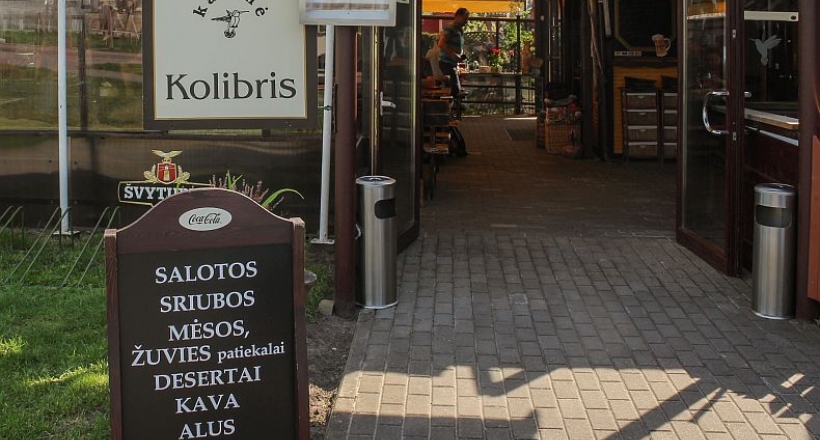
Kavine or cafe Kolibris is located in Lithuanian seaside town of Nida. We paid here a short visit to have a meal. I was not hungry at all this time, so all I tried was just a cup of coffee and milkshake. Girls thus tried some local Lithuanian specialties.
Kavine Kolibris in Nida, Lithuania
Soup
Some fish soup. I didn't tried, but was told that pretty good one.
Ice cream
The Bottom Line
Kavine Kolibris is a very decent place. Try, you won't regret it.
Another Layer of Paint (HDR)
| Home Remodeling | 6 seen
In part 1 I told how we scratched chalk from ceilings and removed old wallpapers, in part 2 I showed how I applied base layer of white paint and did some photography tricks. Today I applied second layer of white paint, both for ceilings and walls, and also mastered a technique, I felt bad about in previous two articles.
I had to use HDR photography technique to get the right exposures of window. Who said a construction worker cannot be a good photographer or vice verse?
Second layer of white paint applied
I hope that stove in the middle of room will keep us warm in cold winter nights.
HDR trick helped save the exposure
Anyway, its time to apply paint for floor and move in, right?
Nida - Resort Town on Curonian Spit in Lithuania
| Travel guides | 15 seen
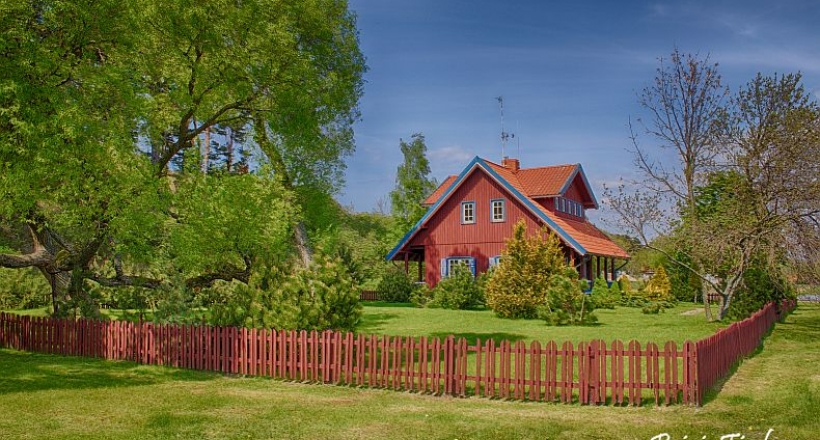
Nida is a resort town in Lithuania, the administrative centre of Neringa municipality. Located on the Curonian Spit between the Curonian Lagoon and the Baltic Sea, it is the westernmost point of Lithuania and the Baltic states, close to the border with the Russian Kaliningrad Oblast exclave. It currently has about 1,650 residents.
We arrived to Nida just shortly we paid a visit to Juodkrante (both are located on Curonian Spit). One of my first observations about Nida were simple, it's some artists paradise or something - a lot of workshops. And later by reading on Wikipedia, turned out I was right.
Thomas Mann Summer house in Nida
In 1929 Nobel Prize-winning writer Thomas Mann visited Nida while on holiday in nearby Rauschen and decided to have a summer house erected on a hill above the lagoon; it was mocked by locals as Uncle Tom's Cabin (Onkel Toms Hütte). He and his family spent the summers of 1930–32 in the cottage, and parts of the epic novel Joseph and His Brothers (Joseph und seine Brüder) were written the
Lagoon at Nida
From the late 19th century, the dune landscape became popular with landscape and animal painters from the Kunstakademie Königsbergarts school. The local inn of Herman Blode was the nucleus of the expressionist artists' colony (Künstlerkolonie Nidden). Lovis Corinthsojourned there, as did Max Pechstein, Alfred Lichtwark, Karl Schmidt-Rottluff, and Alfred Partikel. Painters from Königsberg such as Julius Freymuth and Eduard Bischoff visited the area, as did poets such as Ernst Wiechert and Carl Zuckmayer. Other guests included Ernst Kirchner, Ernst Mollenhauer, Franz Domscheit, and Herrmann Wirth. The painters usually took accommodations at Blode's hotel, and left some of their works with him. Some also built their own residences in the vicinity.
Nida, Lithuania
After World War I Nidden, together with the northern half of the Curonian Spit (Kurische Nehrung), became part of the Klaipėda Region(Memelland) under terms of the 1919 Treaty of Versailles and was annexed by Lithuania in 1923. Officially renamed Nida, the village nevertheless remained a predominantly German settlement; the border with the remaining German (East Prussian) half of the spit lay only a few kilometers to the south.
Swedbank in Nida
In 1939 the town had 736 inhabitants. Nida became nearly uninhabited, like all of the Curonian Spit, as a result of the Red Armyadvance and the Evacuation of East Prussia at the end of World War II, and the eventual expulsion of surviving German inhabitants. The town was reassigned to Lithuania under border changes promulgated at the Potsdam Conference, and became part of the Lithuanian SFSR within the Soviet Union; since 1990 it has been part of independent Lithuania.
Artist workshops
In the early postwar period, Nida was a little-visited fishing village. Later in Soviet times Nida, together with three other villages of the Neringa Municipality (Juodkrantė, Preila andPervalka), was a controlled-entry holiday region reserved for the Communist party officialdom (nomenklatura) and senior industry elite. Strict planning regulations, a ban on industrial development and generous municipal subsidies kept it unspoiled. Since independence, the area has been open to all, but the number of visitors is kept relatively low by the small number of hotel rooms (new developments usually are permitted only on old buildings' foundations) and comparatively high rents.
Nida, Lithuania
The town is an upmarket holiday resort, hosting about 200,000 to 300,000 tourists each summer, mostly Lithuanians, Germans, Latvians, and Russians. It is characterized by low-key entertainment and a distinct family focus. However, during recent years it become a decent point of interest for fine electronica music and modern art shows at an eclectic forest retreat.
Nida Harbor
Nida also has a seaport which is used for ferries and fishing boats.
Paint Job - White ceiling, white walls
| Home Remodeling | 6 seen
Today I'm continuing works in second floors room. Yesterday we did a wallpaper removal and chalk scratching thing. Today is the right time to apply base layer of fresh paint for ceilings.
I had an idea not to apply white paint for walls this time, as I did it in first floor last year, see: Room One - Wall and Ceiling Painting with Water Based Paint; Removing Junk And Adding First Layer of Paint (Kitchen Works); instead to glue new wallpapers here. Thus after finishing paint job for ceilings I decided to apply a test layer with paint on walls, just to see. The result was pretty much satisfactory, and after a short consultations, we decided to go white again.
It was interesting experience not only to excel as a paint dude, but I had a time to improve my photographer skills also (or apply my latest knowledge). It is hard to make a decent photography in a narrow space. I experimented with panorama technique and got pretty decent result (see bellow)
Ceilings and walls before paint job
This is a default photo I could get shooting at widest with my kit lens (18mm).
Paint applied
At this stage paint is applied both to ceilings and first test layer is on the walls. A little bit better photography, just by lowering the shooting angle.Still there is a problem - overexposed window. I decided to experiment with HDR to make a decent photography here next time.
Perspective
The first base layer of paint is applied everywhere. To get a perspective photography of this room I had to shoot about 6 different images and later merge them together in Adobe Photoshop.
Paint job
Juodkrante - Lithuanian Riviera
| Travel guides | 14 seen
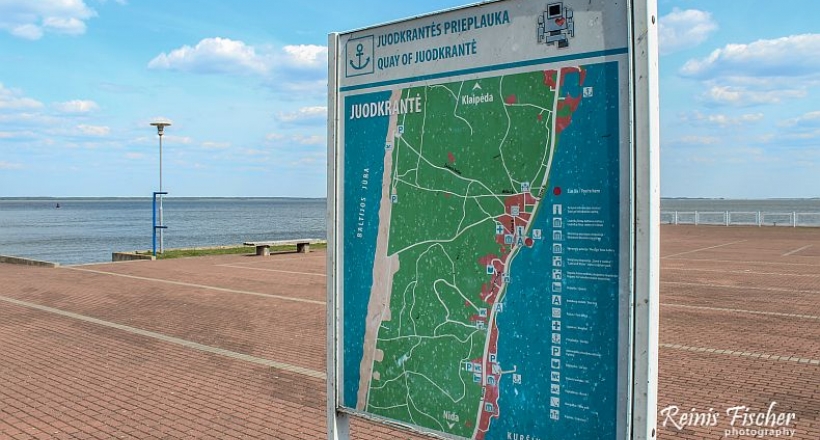
Juodkrante is a seaside resort town located on Curonian Spit in Lithuania some 20km from Klaipeda. To get on to the Curonian Spit you will need to take a ferry at Smiltyine terminal at first.
I was really surprised of different architecture I seen here on Juodkrante and Curonian Spit. I you have ever been close to the Netherlands, you will find some similarities with Dutch architecture here, thus, most probably the architecture here is kept from times when Curonian Spit was part of Germany (prior to WW2). I did find some similarities here with Dutch town of Leiden, for example.
Juodkrante in Lithuania
Juodkrantė (literally: Black Shore) with permanent population of about 720 people is a quiet Lithuanian seaside resort village located on the Curonian Spit. A part of Neringa municipality, Juodkrantė is the second largest settlement on Lithuania's part of the spit.
Situated in Old Prussian territory it was for centuries a fishing village named Schwarzort, which underwent a tourist boom in the late 19th - early 20th century. After World War I this northern part of East Prussia was severed from Germany and the village became known as Juodkrantė.
Quay of Juodkrante
Juodkrantė was first mentioned (as Schwarzort) by the Teutonic Knights in 1429 in a letter describing storm damages. It was initially situated along the Baltic Sea shore, about 2.5 km from the present location. In the early 17th century, due to the Black Death, and moving sand dunes threatening to bury the village, it lost almost all of its inhabitants. In the 1680s, the village relocated to its present location along the Curonian Lagoon shore. After 1724, the sources do not mention the village along the Baltic Sea shore any more. The village did quite well in the new location: a tavern was opened in 1673, a school in 1743, and a wooden church in 1795. Until 1740 the village belonged to German: KreisMemel (Klaipėda County), then from 1740-1795 to Church District German: Kirchspiel Karwaiten (Karvaičiai). It grew in importance after Carwaiten/Karvaičiai/Karwaiten village was swallowed by traveling sand and the seat of the Church District relocated here. The wooden church burned down in 1878 but was soon replaced by a red brick Lutheran church in 1885.
Juodkrante
First Sprouts of Spring
| | 4 seen

A few days ago we constructed our second veggie garden in wooden boxes, then we planted. Few days latter first sprouts were observed.
I was busy with scratching wallpaper from the other room we decided to improve this year, while my better part took some lovely close ups and macro's in garden.
Strawberry plants
Bought these plants at local Kuldiga market
Rhubarb
You can make a lovely jelly out of these, or you can try to make a rhubarb wine later. We decided to try later this Summer and brew our rhubarb wine.
Plants of tomatoes
First sprouts of radishes
First sprouts of dill
A dandelion
Crabapple
Rhuburb